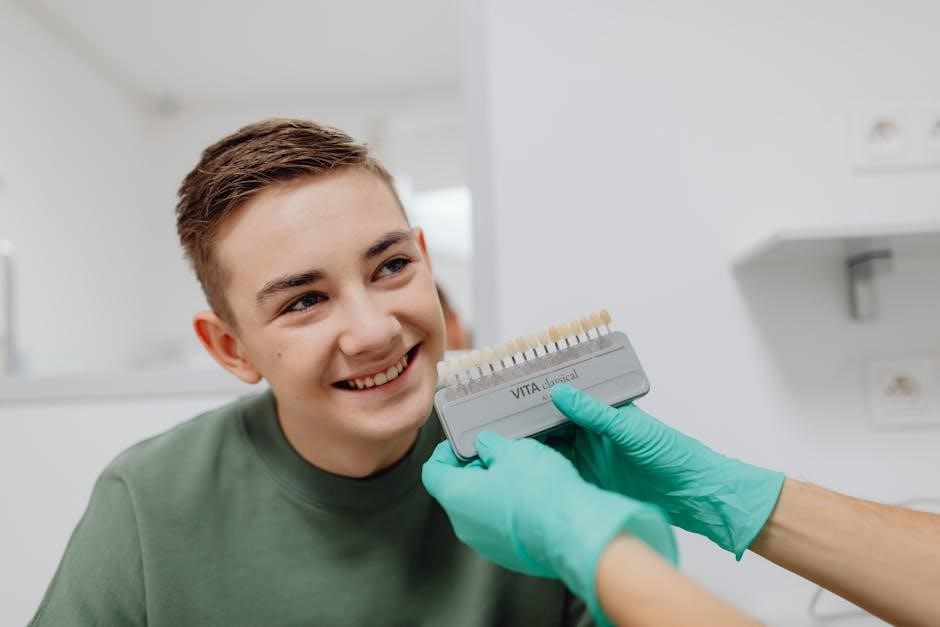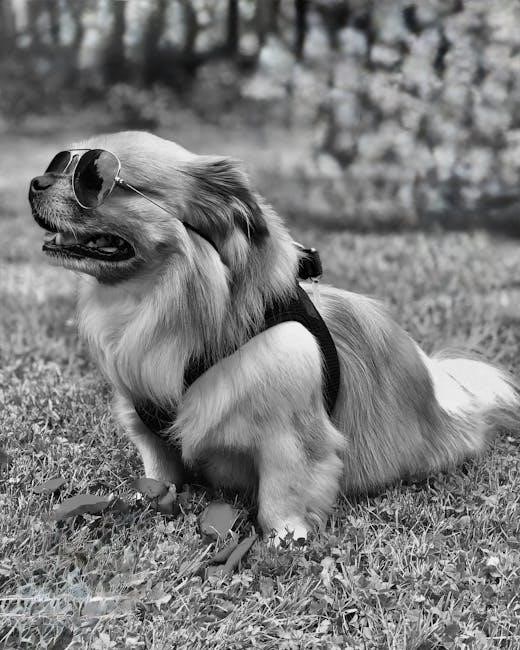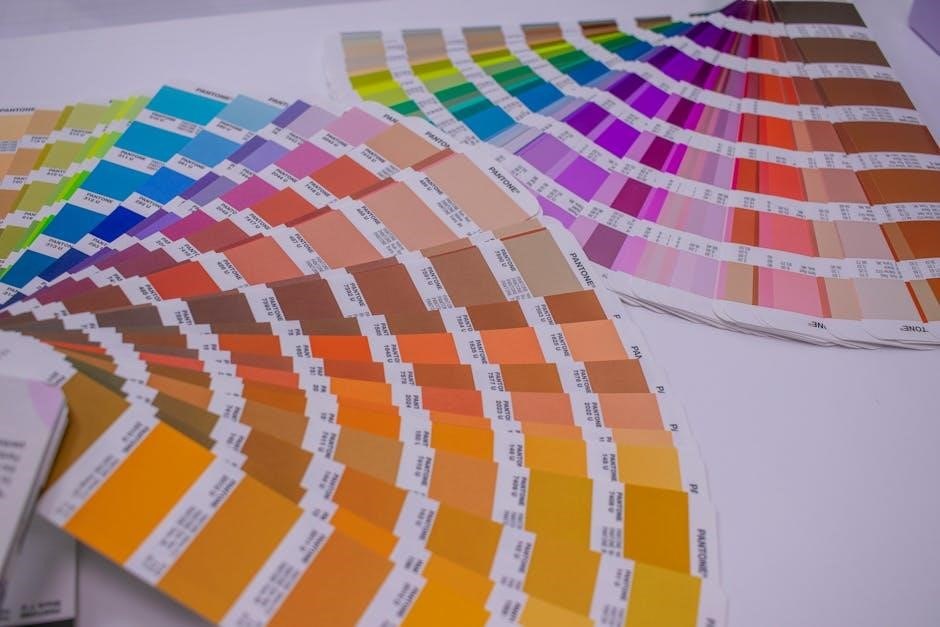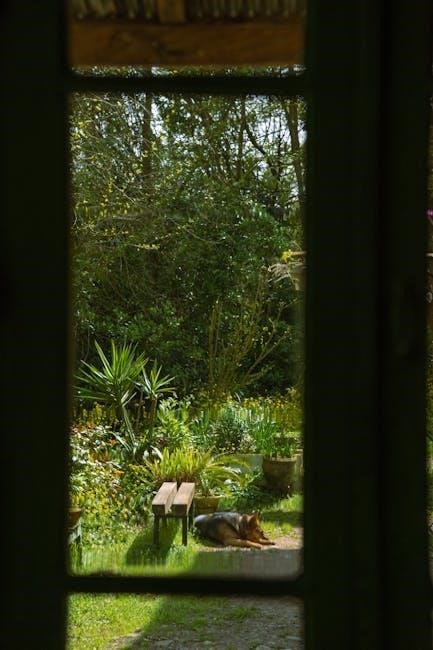Understanding the Vita Shade Guide
The Vita Shade Guide is a standardized tool in dentistry for tooth shade matching, ensuring natural aesthetics in restorative procedures. It classifies shades into systematic categories, aiding professionals globally.
The Vita Shade Guide is a widely recognized tool in dentistry for tooth shade matching, designed to ensure consistent and accurate color reproduction in restorative procedures. It provides a standardized system for classifying tooth shades, making it easier for dental professionals to communicate and select appropriate shades for various materials, such as ceramics and composites. The guide is divided into a systematic classification system, starting with the A1-D4 categories, which represent a range of natural tooth shades. This system has become the international standard for shade matching, ensuring predictable outcomes in aesthetic and restorative dentistry. Its simplicity and reliability have made it a cornerstone in modern dental practice.
History and Development of the Vita Classic Shade Guide
The Vita Classic Shade Guide was first introduced in the 1950s as a pioneering tool for standardizing tooth shade communication in dentistry. Developed to address the need for consistency in color matching, it initially featured 12 shades organized into four hue groups: A, B, C, and D; Over time, the system evolved to include four additional shades, expanding to 16 natural tooth shades. This development marked a significant advancement in restorative dentistry, enabling professionals to achieve more precise and aesthetically pleasing outcomes. The guide’s widespread adoption led to its establishment as the global standard for tooth shade classification, ensuring uniformity across regions and materials, such as ceramics and composites.

Structure of the Vita Shade Guide
The Vita Shade Guide features a systematic classification of tooth shades, divided into the A1-D4 system, offering 16 natural shades organized into four hue groups with varying chroma levels.

The A1-D4 Classification System

The A1-D4 classification system is the core of the Vita Shade Guide, providing a structured approach to tooth shade matching. It categorizes shades into four primary hue groups (A, B, C, D), each representing distinct color characteristics. Within these groups, shades are further divided into chroma levels (1-4), indicating the intensity or saturation of the color. This system offers 16 natural shades, making it a versatile tool for dental professionals. The A1-D4 system is designed to simplify shade selection, ensuring consistency and accuracy in restorative procedures. Its logical organization helps in identifying the closest match for natural teeth, facilitating effective communication between dentists and laboratory technicians. This standardized approach has made the A1-D4 system a global benchmark in dental aesthetics.
Additional Shade Options and Extensions
Beyond the A1-D4 system, the Vita Shade Guide offers extended shade options to accommodate diverse clinical needs. These include additional bleach shades and non-vital tooth options, providing broader coverage for various dental cases. The extended range ensures that professionals can address unique patient requirements, such as highly bleached or discolored teeth. These supplementary shades maintain consistency with the A1-D4 system, allowing seamless integration into existing workflows. The extensions enhance the guide’s versatility, catering to modern aesthetic demands and complex restorative challenges. By incorporating these additional options, the Vita Shade Guide remains a comprehensive and adaptable tool for achieving precise shade matching in contemporary dentistry.

Clinical Applications
The Vita Shade Guide is essential in clinical dentistry for accurate tooth shade matching, ensuring natural aesthetics in restorations. It is a key tool for precise dental procedures and enhances patient satisfaction through reliable outcomes.
Steps for Accurate Shade Matching
Accurate shade matching with the Vita Shade Guide involves several key steps. First, assess the tooth’s value (lightness or darkness) under natural lighting. Next, select the chroma (saturation) that best matches the tooth’s color. Then, determine the hue (basic color tone). Use reference images or digital tools to cross-verify. Finally, validate the shade under different lighting conditions to ensure consistency. These steps ensure reliable and aesthetically pleasing results in dental restorations.
Common Challenges in Shade Selection
Shade selection with the Vita Shade Guide can present challenges, including variations in human perception and lighting conditions. Dentists may struggle with consistent results due to differences in ambient light and individual color vision. Additionally, tooth discoloration or staining can complicate accurate matching. Material differences between natural teeth and restorative materials also pose challenges, as ceramics and composites may not perfectly replicate natural shades. Furthermore, patient expectations and psychological factors, such as desired aesthetics, can influence shade choices. To overcome these challenges, professionals often rely on additional tools, such as digital shade matching systems, to enhance accuracy and patient satisfaction.
Advantages of the Vita Shade Guide
The Vita Shade Guide offers standardized shade matching, ensuring consistency and accuracy in dental restorations. It enhances communication between clinicians and laboratories, improving patient outcomes and satisfaction globally.
Standardization in Dentistry
The Vita Shade Guide provides a universal standard for tooth shade communication, ensuring consistency across dental practices worldwide. By offering a standardized system, it eliminates variability in shade interpretation, enabling precise matching for restorative materials like porcelain and composites. This uniformity facilitates clear communication between dentists, laboratories, and patients, reducing errors and enhancing patient satisfaction; The guide’s widespread adoption ensures that dental professionals can rely on a common language, making it an indispensable tool in modern dentistry. Its standardized approach not only streamlines workflows but also contributes to achieving natural, aesthetically pleasing outcomes in tooth restoration procedures.
Ease of Use for Professionals
The Vita Shade Guide is designed for simplicity and efficiency, making it a practical tool for dental professionals. Its intuitive layout allows for quick shade identification, saving time during procedures. The guide’s portability ensures it can be used in any clinical setting, and its durability withstands frequent use. Clear categorization and visual aids enhance ease of use, reducing the learning curve for new practitioners. Additionally, the guide’s universal acceptance simplifies communication between dentists and laboratories, ensuring consistent results. These features make the Vita Shade Guide an essential, user-friendly resource for achieving accurate and efficient shade matching in dentistry.

Future Trends
The Vita Shade Guide is evolving with digital innovations, AI integration, and customization options, enhancing accuracy and efficiency while incorporating sustainable practices for better outcomes.

Digital Innovations in Shade Matching
Digital innovations are revolutionizing shade matching with the Vita Shade Guide. Advanced technologies like intraoral scanners and AI-powered tools enable precise color detection, reducing human error. These systems integrate seamlessly with the Vita Classic Shade Guide, offering real-time comparisons and enhancing accuracy. Additionally, digital platforms allow for easier communication between dentists and labs, ensuring consistent results. Virtual shade libraries and 3D modeling further streamline the process, making it more efficient and patient-friendly. Such innovations not only improve outcomes but also align with modern dental practices, emphasizing sustainability and customization in restorative dentistry.

Integration with Modern Dental Materials

The Vita Shade Guide seamlessly integrates with modern dental materials, ensuring compatibility and accuracy in restorative procedures. Materials like zirconia, lithium disilicate, and composites are now matched precisely using the guide’s standardized shades. This integration enhances both aesthetic and functional outcomes, as the guide’s classifications align with the properties of contemporary materials. The Vita system supports CAD/CAM technologies, enabling precise shade replication in digital workflows. Additionally, it remains a cornerstone in both analog and digital dental practices, ensuring consistent results across various materials. This adaptability underscores the guide’s enduring relevance in modern dentistry, where personalized and high-quality restorations are prioritized.

No Responses